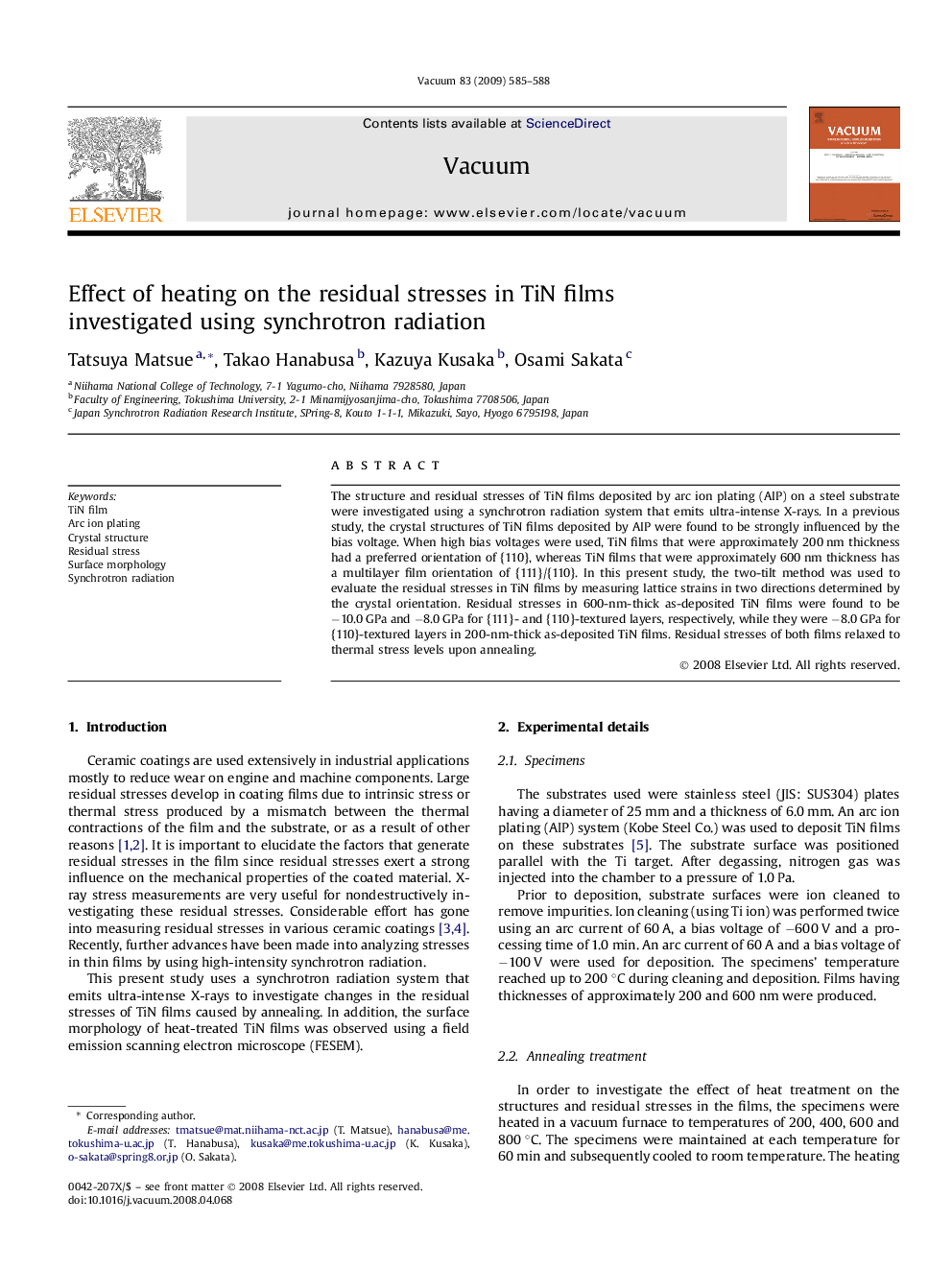| Article ID | Journal | Published Year | Pages | File Type |
|---|---|---|---|---|
| 1691424 | Vacuum | 2008 | 4 Pages |
Abstract
The structure and residual stresses of TiN films deposited by arc ion plating (AIP) on a steel substrate were investigated using a synchrotron radiation system that emits ultra-intense X-rays. In a previous study, the crystal structures of TiN films deposited by AIP were found to be strongly influenced by the bias voltage. When high bias voltages were used, TiN films that were approximately 200Â nm thickness had a preferred orientation of {110}, whereas TiN films that were approximately 600Â nm thickness has a multilayer film orientation of {111}/{110}. In this present study, the two-tilt method was used to evaluate the residual stresses in TiN films by measuring lattice strains in two directions determined by the crystal orientation. Residual stresses in 600-nm-thick as-deposited TiN films were found to be â10.0Â GPa and â8.0Â GPa for {111}- and {110}-textured layers, respectively, while they were â8.0Â GPa for {110}-textured layers in 200-nm-thick as-deposited TiN films. Residual stresses of both films relaxed to thermal stress levels upon annealing.
Keywords
Related Topics
Physical Sciences and Engineering
Materials Science
Surfaces, Coatings and Films
Authors
Tatsuya Matsue, Takao Hanabusa, Kazuya Kusaka, Osami Sakata,
